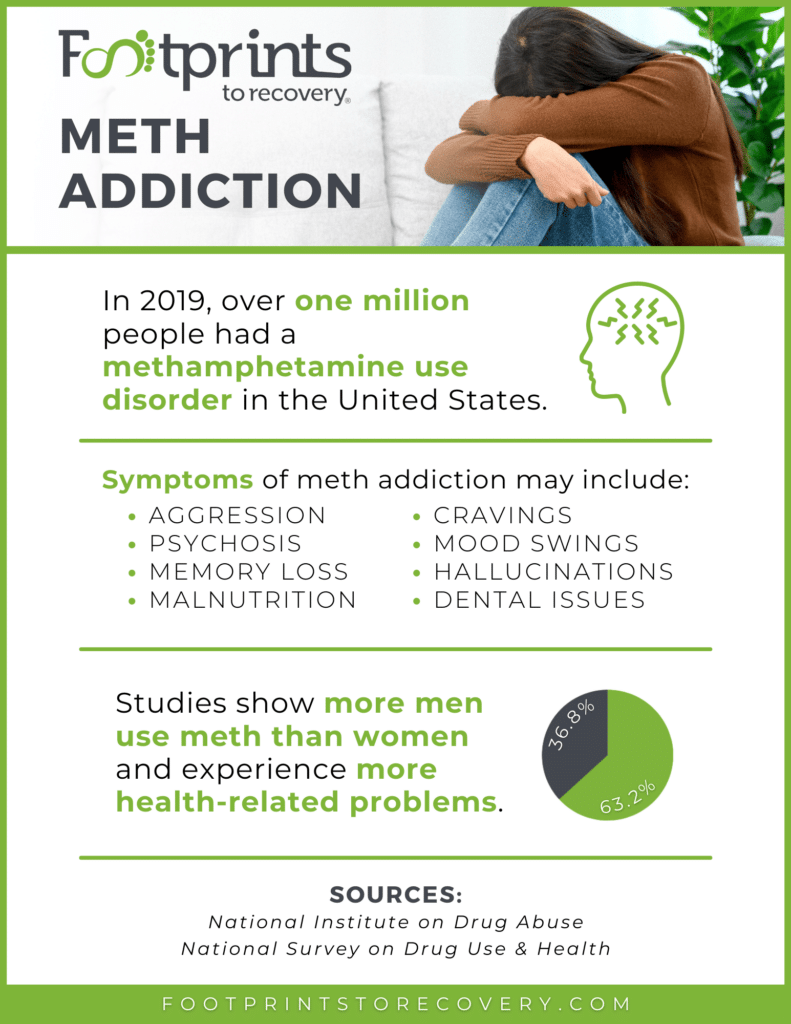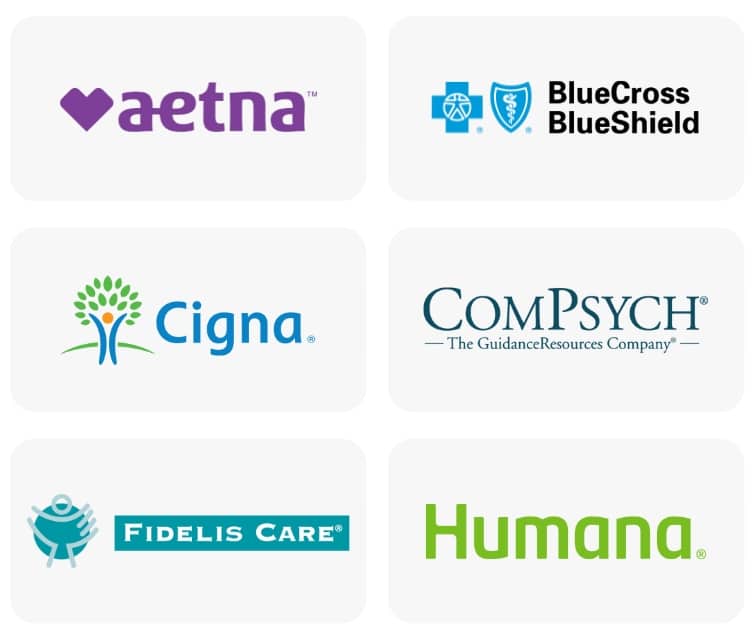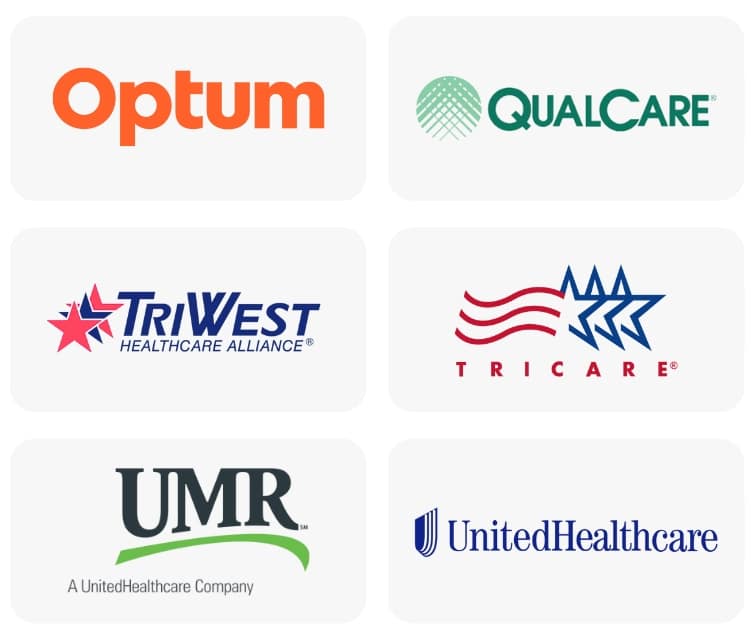Skip To Section
Methamphetamine, or meth, is a powerful and highly addictive stimulant that affects the central nervous system. Its immediate euphoric high can quickly lead to addiction. However, this fleeting pleasure comes with serious risks to both physical and mental health. Whether you’re worried about yourself or a loved one, understanding meth’s effects is an important step toward recognizing the need for help and recovery.

What Is Meth?
Methamphetamine, or meth, is easy to become addicted to and difficult to quit. Meth is a stimulant, which means it speeds up functioning in areas of the brain related to energy, focus, and pleasure. Meth forces your brain to release dopamine, the “feel good” chemical.
With long-term use, meth damages dopamine receptors. It becomes almost impossible to feel pleasure or enjoyment from normal activities because you’re dependent on meth for good feelings. Meth users often find themselves incapable of feeling happy—known as anhedonia—and face long-term depression. If you’re dependent on meth, it’s important to get professional addiction treatment to repair and prevent further physical and mental damage.
In rare cases, methamphetamine is prescribed for obesity or ADHD, but the majority of U.S. meth is illegally made and distributed. According to the addiction statistics by The Substance Abuse and Mental Health Services Administration (SAMHSA), in one year alone:
- 1.5 million Americans had a diagnosable methamphetamine use disorder.
- 2.5 million Americans used methamphetamine.
- Americans aged 26 or older used meth the most at 1.4 million.
- Americans aged 26 and older were most frequently diagnosed with a methamphetamine use disorder.
Meth Abuse Statistics
In rare cases, methamphetamine is prescribed for obesity or ADHD, but the majority of U.S. meth is illegally made and distributed. According to the addiction statistics by The Substance Abuse and Mental Health Services Administration (SAMHSA), in one year alone:
- 1.5 million Americans had a diagnosable methamphetamine use disorder.
- 2.5 million Americans used methamphetamine.
- Americans aged 26 or older used meth the most at 1.4 million.
- Americans aged 26 and older were most frequently diagnosed with a methamphetamine use disorder.
What Are Signs of Meth Addiction?
Using meth even once radically throws off your brain’s reward system. Many people find that once they take their first hit, nothing else can come close to making them as happy. Therefore, the strongest sign you are addicted to methamphetamine and need treatment is feeling you need meth to be happy. You may feel life is meaningless and empty without it.
A few other signs and symptoms of addiction to meth are:
- Weight loss
- Sores on the skin (after picking at skin because you feel like bugs are crawling on or under your skin)
- Tooth decay
- Paranoia and intense anxiety
- Isolating from friends and family
- Extreme mood swings
- Psychosis
- Aggressive behavior
- Pulling away from activities you previously enjoyed

What Is Meth Withdrawal Like?
There are two phases of meth withdrawal:
- The acute phase has the most severe symptoms. It typically lasts one to two weeks.
- The subacute phase can last another couple weeks, with similar symptoms that decrease in severity.
The acute and subacute phases of meth withdrawal are characterized by:
- Intense cravings
- Fatigue
- Anxiety
- Depression
During this time, it is essential to have a support system in place to help you through the difficult symptoms. The first few days after quitting meth are often the hardest, as your body adjusts to the absence of the drug. Cravings are often intense during this time, and it can be tempting to give in and use again. It’s important to stay strong and resist relapse. With time, the cravings will subside, and you will start to feel better. Fatigue, anxiety, and depression are common during meth withdrawal, and it’s important to get plenty of rest and eat a healthy diet. Exercise can also help boost your mood and energy levels.
Meth withdrawal symptoms may include:
- Severe fatigue
- Depression
- Increased appetite
- Anxiety and paranoia
- Tremors or shaking
- Sweating and chills
- Difficulty sleeping
- Psychosis
"*" indicates required fields
Fill out the form below and one of our admissions team members will reach out to you:
"*" indicates required fields
Common Questions About Meth Abuse
Many people struggling with meth addiction ask questions like, “How long does meth stay in your system?” or “What are the effects of meth on the body?” These are important questions to ask because methamphetamine, also known as meth, is an extremely addictive and harmful drug.
To help you gain a better understanding of meth’s impact, we’ve compiled a list of the most common questions and answers about meth abuse.
Methamphetamine, commonly known as meth or crystal meth, is a highly addictive and dangerous drug. It is a stimulant, which means it increases activity in the brain and body. Methamphetamine is a synthetic drug that can be made from a variety of chemicals, including pseudoephedrine and ephedrine. It has been used for both medical and recreational purposes, but its addictive properties have made it a widely abused substance.
Methamphetamine, commonly known as meth, has profound and perilous effects on the human body, impacting nearly every system within. Initially, users might experience a rush of energy and euphoria due to a massive release of dopamine in the brain. However, this short-term pleasure comes with a hefty price tag on one’s health.
Physically, meth can cause an increase in heart rate and blood pressure, leading to chronic cardiovascular problems or even acute events like heart attacks. The drug also raises body temperature and can induce hyperthermia. With prolonged use, individuals often face severe dental issues, known colloquially as “meth mouth,” where teeth rapidly decay and fall out due to the combination of drug acidity, poor hygiene, and nutritional neglect.
On a neurological level, meth wreaks havoc by damaging brain cells that produce dopamine, gradually reducing the brain’s ability to experience pleasure naturally. This damage leads to cognitive impairments including memory loss, an inability to concentrate, and severe mood swings ranging from aggression to symptoms of psychosis such as paranoia and hallucinations.
Moreover, meth use severely impacts the user’s lifestyle leading to malnutrition due to appetite suppression while increasing risky behaviors that contribute further to their physical decline. The compulsion for continued use escalates as the body builds tolerance requiring higher doses for the same effect which deepens the cycle of addiction and further bodily harm.
Methamphetamine poses dangerous risks not only immediately through its short-term effects but also long-term by systematically deteriorating your physical health, mental well-being, and quality of life.
While some may consider detoxing off meth at home as an option, it’s important to understand the potential risks and challenges involved. Detoxing from any substance can be physically and emotionally taxing, and attempting to do so without proper support and supervision can have serious consequences.
Even after meth has left your system, you will likely still have lingering withdrawal symptoms.
Crystal meth stays in the blood for one to three days.
Crystal meth stays in saliva for one to four days.
Crystal meth stays in urine anywhere from one day all the way to a week.
Crystal meth stays in hair for up to 90 days.
Do I Need Medical Detox from Meth?
If you’re struggling with a meth addiction, you may be wondering if you need to go through medical detox. The answer is that it depends on a variety of factors, including the severity of your addiction and your overall health. If you’ve been using meth heavily for an extended period, your body may be dependent on the drug. This means you’ll experience withdrawal symptoms when you try to quit, which can be uncomfortable and even dangerous. Medical detox can help ease these symptoms and make the process of quitting safer. In addition, if you have any underlying medical conditions, such as heart or liver disease, it’s important to detox under medical supervision.
In most cases, detoxing from meth is usually not dangerous, but it may be indirectly dangerous. Occasionally, depression or psychosis can be meth withdrawal symptoms. This can make some people engage in self-harm or become suicidal. In a medically supervised detox setting, medications can be used to treat many of the symptoms that come up.
It is extremely hard to abstain from meth when going through withdrawals. A detox setting, like medical detox with Footprints to Recovery, removes temptations in your environment and eases withdrawal symptoms and cravings. This reduces your chance of relapse while allowing you to begin to imagine what life without meth could look like. You’ll also be under the supervision of medical professionals who can help keep you safe. They will monitor your vital signs and attend to any medical emergencies or discomfort.
How Long Does It Take to Detox from Meth?
The length of time it takes to detox from meth depends on:
- How long you’ve been using meth
- How much meth you typically use
- Whether you’re also abusing alcohol or other drugs
For most people, the acute phase of withdrawal lasts between one and two weeks. The subacute phase can last another couple of weeks.
Can You Detox from Meth At Home?
It is never recommended that you detox from drugs or alcohol on your own. Why?
- It can be dangerous to detox without medical supervision.
- The withdrawal symptoms can be so uncomfortable that it’s difficult to make it through on your own. You may start using drugs again just to get rid of the painful symptoms.
If you or a loved one are struggling with meth addiction, it’s important to get professional help as soon as possible. Withdrawal symptoms can be severe and uncomfortable, but there is hope. Withdrawal and detox are only the first steps on the road to recovery. To fully recover from meth addiction, you’ll need comprehensive addiction treatment. Treatment should address all aspects of your life, including your physical and mental health and your social support system.
Do I Need Inpatient or Outpatient Treatment for Meth Addiction?
In treating methamphetamine addiction, it can be difficult to know whether you need inpatient or outpatient rehab. There are several factors to consider, including:
- The severity of your addiction
- Your overall health
- The support system you have
- Whether you have co-occurring mental health issues
- If you use other drugs or alcohol
If you have a severe meth addiction or if you have other health problems that could complicate treatment, then inpatient treatment may be the best option. An inpatient treatment center offers around-the-clock care from medical professionals, and it can be an effective way to detox from meth and get started on the road to recovery. It is a greater financial and time commitment than outpatient treatment.
If you have a less severe addiction and a strong support system in place, then outpatient rehab may be appropriate. Outpatient treatment typically involves attending therapy sessions and meetings several times per week, and it allows you to continue living at home and meeting your everyday responsibilities.
Ultimately, the decision of whether to pursue a residential program or outpatient treatment should be made with the help of a qualified addiction specialist. The more complex and severe the substance abuse disorder, the higher the level of care you need.
Inpatient Treatment for Meth Addiction
Addiction is a serious disease that can have lasting effects on both the mind and body. Inpatient treatment is one way to get help for addiction, and it can offer many benefits. For one thing, inpatient drug rehab provides around-the-clock care and supervision. This can be especially helpful if you’re struggling with severe addiction or have relapsed after previous attempts at recovery.
Inpatient treatment also offers a chance to focus solely on addiction recovery, without the distractions and triggers of daily life. This can give you the time and space you need to work on yourself and your sobriety. In addition, inpatient treatment typically includes individual therapy, group therapy, and other evidence-based treatments. These can help you to understand your meth addiction, develop healthy coping skills, and build a support system.
Highlights of Footprints to Recovery’s inpatient rehab include:
- Individual, group, and family therapy
- Home-like residences
- 24/7 recovery support
- Well-balanced meals
- Holistic approaches like yoga and mindfulness
- Trauma treatments like EMDR (eye movement desensitization and reprocessing)
- Fitness
- Alternative approaches like art therapy and music therapy
- Aftercare planning
Outpatient Treatment for Meth Addiction
Footprints to Recovery offers three meth addiction outpatient treatment paths for different levels of care. They are:
- Partial hospitalization program – Partial hospitalization, or PHP, means spending half your time in treatment and the other half at home. It requires the most outpatient time in treatment while still allowing you to go home each night. It involves six hours per day, five days a week. PHP is one step down in intensity from inpatient rehab.
- Intensive outpatient rehab – Our intensive outpatient program, or IOP, is a higher level of care than basic outpatient. It includes all the same elements as basic outpatient, but you’ll spend more time in treatment: three hours of treatment per day, three to five days per week.
- Basic outpatient treatment – Our lowest level of care is suited for those who have already completed a higher level of care. It may also be a good fit for you if you must continue attending school, working, or caring for children while you’re in treatment for meth. It involves three hours of programming on one or two days each week. Program members will have individual, family, and group therapy; case management; and the freedom to choose between an evening or day schedule.
What Types of Meth Treatments Are Available?
There are a number of effective therapies that can help people recover from methamphetamine addiction. Successful treatment includes a blend of approaches like behavioral therapies, holistic therapies, and 12-step programs. These types of treatments help you learn new coping skills, manage triggers, and build a support network.
Some common approaches used at a meth addiction treatment center include:
- Behavioral and complementary therapies
- Holistic approaches
- Dual diagnosis treatment
- Aftercare planning
Behavioral Therapies
There are a variety of behavioral therapies used in addiction treatment, each with its own strengths and benefits. Some of the most common approaches are:
- Cognitive behavioral therapy (CBT): CBT helps you identify and change negative thought patterns and behaviors that contribute to addiction.
- Dialectical behavior therapy (DBT): DBT focuses on teaching skills like mindfulness and emotion regulation to cope with difficult situations and triggers.
- Motivational interviewing (MI): MI helps you explore ambivalence about change and develop the motivation to recover.
These are just a few of the many behavioral therapies that can be used in meth addiction treatment, both in inpatient rehab settings and in outpatient counseling. Every individual responds differently to different approaches, so it’s important to work with a therapist to find the right fit for you.
Complementary Therapies
When most people think of addiction treatment, they think of detoxification and rehabilitation programs that help people through the withdrawal process and teach them how to live drug-free. There are a variety of alternative and complementary therapy approaches that can also be effective in treating addiction.
For example, art therapy uses painting, drawing, and other forms of art to help you express emotions and work through difficult feelings. Similarly, music therapy uses music to promote relaxation and stress relief. There is also evidence that EMDR (eye movement desensitization and reprocessing) can help reduce the intensity of memories associated with addiction and trauma.
These alternative approaches can complement traditional treatment programs or provide an alternative for those who do not respond well to conventional methods. They also offer a non-threatening and creative way to explore emotions and experiences related to addiction.
Holistic Approaches
There are a variety of holistic approaches that can be helpful in addiction treatment. Each can help support your whole self by addressing your physical, emotional, and spiritual needs. Some of them include:
- Yoga – Helps reduce stress and promote relaxation
- Massage therapy – Helps release tension and promote healing
- Mindfulness – Helps reduce stress and promote relaxation
- Exercise – Helps improve mood and increase energy levels
- Experiential approaches – Help address underlying emotional issues
These approaches can be used in combination with traditional therapies to create a comprehensive treatment plan.
Dual Diagnosis Treatment
Addiction is a complex disease that often occurs alongside other mental health disorders, such as depression, anxiety, bipolar disorder, or post-traumatic stress disorder. This is known as co-occurring disorders or a dual diagnosis, and it can make treatment more difficult.
For example, someone with co-occurring disorders may have difficulty staying sober if they’re also dealing with depression or anxiety. They may self-medicate with drugs or alcohol in an attempt to cope with their symptoms.
If you have a dual diagnosis, it’s important to address all of your needs in outpatient or residential treatment. This may include therapy, medication, and lifestyle changes.
Aftercare Planning
Aftercare planning is a critical part of addiction treatment. It helps to ensure you have the support you need to stay sober after you leave treatment. Aftercare planning typically includes developing a support network of family, friends, and other individuals in recovery.
It may also involve finding housing and employment, as well as accessing community resources. Treatment programs often provide referrals to resources such as 12-step meetings and sober living homes. They may also provide ongoing counseling and support. Aftercare planning is an important way to help you maintain sobriety and prevent relapse.
What is Recovering from a Meth Addiction like at Footprints to Recovery?
At Footprints to Recovery, our addiction treatment programs encompass a variety of therapeutic approaches, all designed to help you get and stay sober. They include things like:
- Individual, group, and family therapy
- Cognitive behavioral therapy (CBT)
- Acceptance and commitment therapy (ACT)
- Dialectical behavior therapy (DBT)
- Medication-assisted treatment (MAT)
- Dual diagnosis treatment and medication management
- Motivational interviewing (MI)
- Eye movement desensitization and reprocessing (EMDR)
- Yoga
- Fitness
- Mindfulness
- Biofeedback
When recovering from meth addiction, it’s very important to have peers who understand what you’re going through and on whom you can lean. Our group therapies and activities provide much-needed emotional support, along with valuable tools, to guide you through the toughest days of your recovery journey.
How Long Does Recovering from a Meth Addiction Take?
The physical withdrawal phase of meth abuse typically passes after about a month. However, recovering from meth addiction can take years. Because your brain has come to depend on the intense rush of dopamine, depression can last into sobriety. Meth cravings fade in intensity, but they may come up unexpectedly. The same is true for anything that triggers you to want to use meth.
Because the risk of relapse never fully ends, addiction recovery is a lifelong process. That’s why we at Footprints to Recovery have quality aftercare programs to support you after you leave any of our addiction treatment programs.
What Happens When I Leave Meth Rehab?
Recovery doesn’t end the day you leave treatment. Maintaining your sobriety from drugs and alcohol is a lifelong process. That’s why we’ll help you create an aftercare plan. That’s also why we have our alumni program. Our alumni groups offer chances to connect with other alumni of our programs in a fun, community-building way. They also act as safe spaces to process the challenges that may come up in your recovery journey.
You can also consider joining a sober living program after meth rehab. Sober homes provide a supportive, 24/7 community designed to help individuals as they transition back into everyday life. These programs are particularly valuable for those seeking a structured, encouraging atmosphere to maintain their sobriety.
Does Insurance Cover Drug Rehab for Meth?
Meth addiction treatment is an important investment in your future. However, insurance coverage for treatment can be complex and frustrating.
At Footprints to Recovery, we accept most insurance plans, and we’ll work with your insurance to ensure the best coverage possible. You can get started on insurance verification through our secure, online form.
Don’t hesitate to reach out to us with any questions you have about payment options or meth rehab. We’re here to help you get the treatment you need to begin building a better tomorrow!
We Can Help You Beat Meth Addiction
Recovery from meth addiction is possible. At Footprints to Recovery, we’re ready to support you or your loved one. We are passionate about recovery, and we’re here from meth detox and inpatient to outpatient and beyond. Contact Footprints to Recovery today to take the next step in building your new life.
Our admissions team is available 24/7 to listen to your story and help you get started with the next steps.








